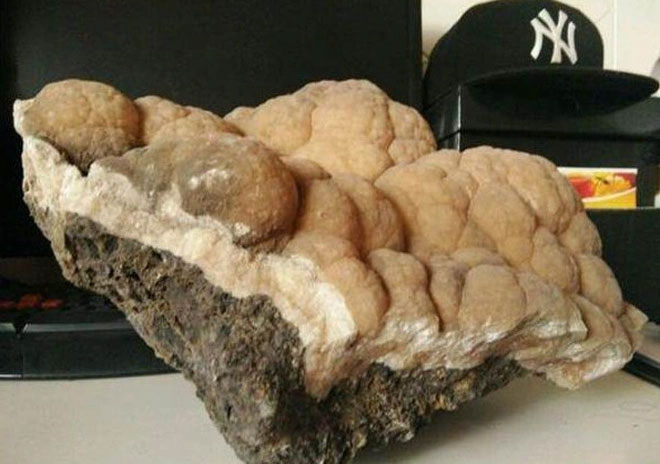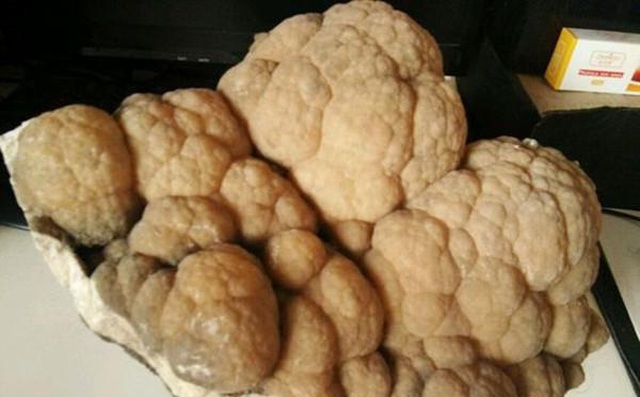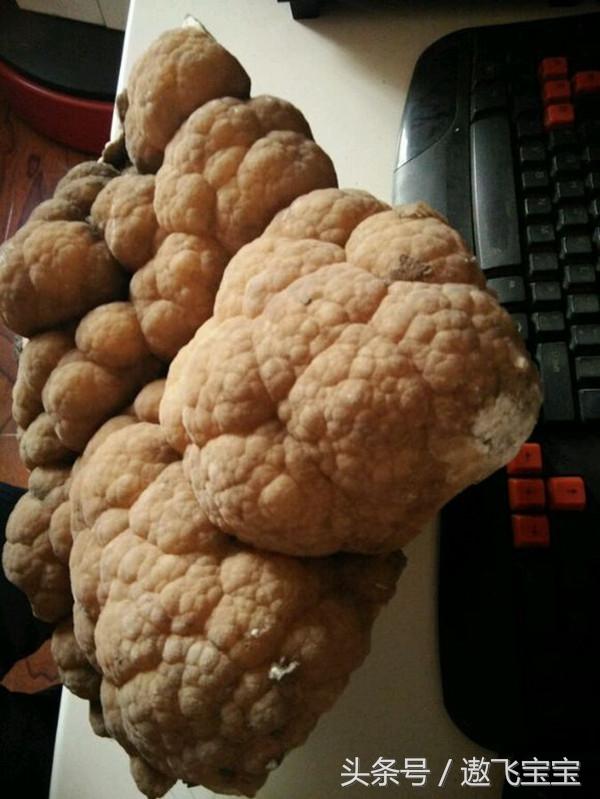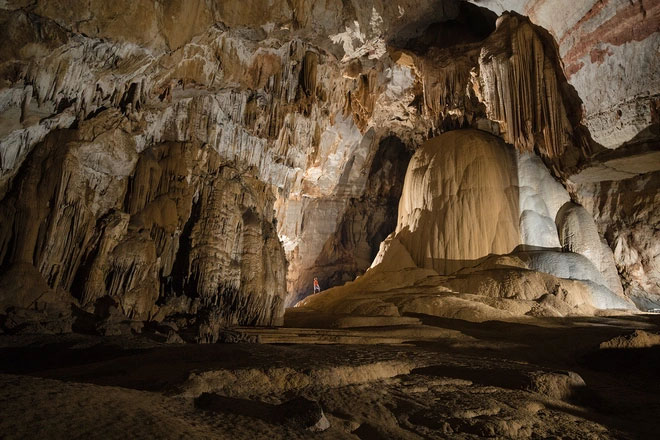During a cave expedition, a Chinese man accidentally discovered a strange object that looked like a cauliflower or a fossilized mushroom.

The strange object looks like a fossilized cauliflower but is actually a cave stalactite.
After getting closer, this person noticed that this seemed to be a stone with a unique shape, with one-third of the block consisting of white and dark yellow stone. While the remaining two-thirds are black.

This man decided to take it home and ask an expert to evaluate its value.
It was surprising that the expert’s conclusion was that this was a cave stalactite, not a cauliflower fossil as initially speculated.

Stalactites, also known as stalactites, are formed by the residue of dripping water that has accumulated over hundreds, thousands, or even millions of years.
Sometimes the stone bells are distributed along cracks in the ceiling or wall of the cave, one close to the other and attached to each other by a thin piece of stone that looks like a curtain with many folds hanging down, called a stone curtain. Over a long period of time, stone bells and stalagmites can stick together and form stone columns.

Stalactites are also known as stalactites.
Thus, it can be seen that the formation of stalactites in limestone caves is a masterpiece made up of rock and water.
It is also considered a natural treasure, because the time it takes to form stalactites can be up to hundreds of millions of years.





